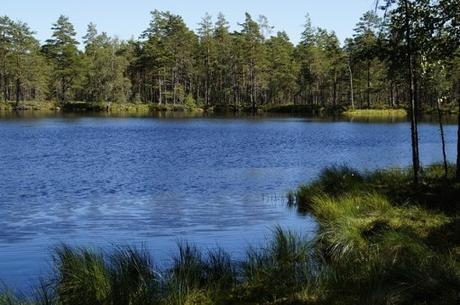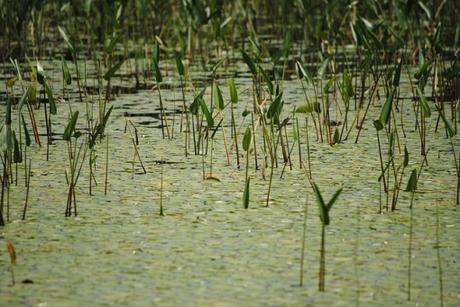A Look at Freshwater Biome
The freshwater biome is of significant importance in the world, yet so many fail to realize its importance. These biomes consist of small bodies of water, such as creeks, lakes, streams, and rivers. These bodies of water contain fresh water and are free of salt. There are major differences in the water that is fresh and that with salt. Most plants and animals can not survive without freshwater biomes.
A few important facts about the freshwater biome that you should know:
- There is about 1/5 of the Earth covered by freshwater biome
- Over half of the water that humans and animals drink come from freshwater biome sources
- The water used to wash your dishes and to take a shower with is also thanks to these freshwater biomes
- Temperatures in freshwater biomes range from 39° to 71° F
- Russian lakes contain freshwater biome. They are also found in North America, particularly in Florida, as well as the Amazon River
- It takes just one foot of water to make up a Freshwater Biome. None are more than six foot in depth
- The Florida Everglades is the largest freshwater biome in the world
- Freshwater Biomes are always located in areas that are high in nutrition. Due to this fact, plants and animals are able to live in the areas with ease
- Bodies of water found within the freshwater biomes are shaped in various ways and in different sizes. Although most of us do not think anything about these shapes, they are actually vital to our living. They are shaped in such ways that water is easy to collect, to prevent flooding and for crop irrigation.
- Insects are popular in these areas because there is often stagnant water around. This water allows the insects to reproduce.
- As annoying as an insect is, they provide other animals a source of food and nutrients and are very important to a freshwater biome area.

Let’s take a look at some of the different types of freshwater biome sources:
- Wetlands: Wetlands is an area that is made up of standing water. It can be thought of as land that is saturated with water. This includes swamps, bogs, marshes, flood plain and prairie pothole. They can be found throughout the world and are often located near large bodies of water like lakes and rivers.
Wetlands are important because they prevent flooding by absorbing water when it gets too high. They also help to purify water. Plants that live in wetlands are called Hydrophytes. Plants that are most commonly found in wetland are milkweed, water lilies, grasses, tamarack,sedges, duckweed, cattail, cypress trees, and mangroves.
Many species of amphibians, reptiles, mammals and birds can also be found in wetlands. Beavers, minks, raccoons, and deer are among the types of animals found in wetlands.
- Rivers/ Streams: A river or stream is a body of water that flows only in one direction. Unlike ponds and lakes rivers and streams are constantly in motion. The temperature is cooler at the source than at the mouth. Streams and rivers are found all across the Earth and travel thousands of miles before they join a ocean. A spring, lake or snow melt begins the formation of a river or a stream and ends at an ocean or other body of water.
As the rives flow, the width increases and so does the species diversity. Various freshwater fish and plants grow near rivers and streams. Most of the rivers may run during spring and summer as cold temperatures freezes them. Plants are normally found along the edge of the river. The most commonly types of plants include tapegrass, water stargrass, willow trees, and river birch. Animals that are found in or around the river include fishes, crabs, snakes, beavers, crocodiles, snails, insects and otters.
- Lakes & Ponds: Some ponds come and go. Some are around for years. A lake or pond is generally disconnected from other water sources, so not all types of plants and animals can survive in this particular freshwater biome. They are found in all types of environments and continents. They range in size from just a few square meters to thousands of square kilometers.
Just as there are many freshwater fish found in rivers and streams, there are also many species found in lakes and ponds. They are important because they serve as fresh source of water for the animals living nearby. Animals in the lakes include plankton, crayfish, snails, worms, frogs, turtles, insects, and fishes. Plants include water lilies, duckweed, cattail, bulrush, stonewort, and bladderwort.
Location and Climate
Freshwater biome include lakes, ponds, rivers, and streams. While ponds are small bodies of water surrounded by land, lakes are large bodies of freshwater surrounded by land. The freshwater biome covers roughly 20% of the Earth and 0.8% of the total water on this Earth. Lake Baikal, in central Asia, is the biggest lake on Earth. Most lakes contain diverse species of plant and animal life. Rivers are nothing but moving bodies of freshwater that originate in the mountains and come down to Earth from melting of ice and eventually flow into the ocean. Rivers change their course as they travel and carve a path through the land.
The temperatures range from 65 °F to 75 °F in the summer and 35 °F to 45 °F in the winter. The climate of freshwater biome is determined by a number of factors including location, season and depth of water. On average, the temperature will decline as the water gets deeper.
Animals of Freshwater Biome
As mentioned earlier, the Freshwater Biome is a great place for plants and animals alike to call home, and many do. Because the water is free of the harsh salt found in other areas, these animals and plants thrive. Even humans benefit from the freshwater biome.
Animals that live in the Freshwater Biomes include:
- Frogs
- Mosquitos
- Turtles
- Raccoons
- Shrimp
- Crab
- Tadpoles
- Snakes
Snakes are commonly found in freshwater biomes. There are a variety of snake species which are often heavily populated in lakes, rivers, and marshes, as well as the surrounding areas. Water Moccasins are among one of the most common types of snakes found in the area. In some areas of the freshwater biome alligators are also found, but not in all biome areas.
Obviously there are animals that live both in the water and on the land of the freshwater biome. The animals living on the land are usually dependent on the lakes and streams to supply their water. The size and type of fish is deponents upon the area and the season. Bass, Catfish, and Tilapia are among the types of fish found in the areas.
In all, the freshwater biome is home to over 1,200 amphibian species, 700 fish species and a variety of insects. The mosquito is perhaps the most popular of those insects, but not one that very many people are fond of. Despite this fact, each insect and animal in the freshwater biome plays an important role in keeping the environment sufficient.
Plants of Freshwater Biome
Some of the different plants that can be found in freshwater biome include:
- Mangrove Leaves
- Spike Rush
- Water Lily
- Cattail
- Bull Rush
- Pickerel Weed
- Many others
Grass and sedge are two popular plants found growing in the freshwater biome. Trees are not common, but sometimes seen in these areas. Oftentimes the plants found in freshwater biomes are unidentifiable to most of us.

The Importance of Cyanobacteria
Cyanobacteria is largely found in freshwater biomes. Here are a few important things to know about this:
- Cyanobacteria in blue and green algae
- It is found in almost all freshwater biomes
- Many animals feed upon Cyanobacteria and need it for survival
- Fleas and flies both feed on algae
Many people travel to freshwater biome destinations every year. These people come to enjoy the ambient peace of mind and relaxation offered in the area. Of course, one cannot forget fishing that is so attractive.
Threats to the Freshwater Biome
Although the freshwater biomes found throughout the world are essential to the survival of man, there are threats that put it at risk. Let’s examine those risks.
Pollution
- Free radicals that form in the air can cause difficulty in growth for both animals and plants
- Human waste and chemicals are also cases of pollution that also affect the plants and animals living in freshwater biomes.
Global Warming
Another threat to the freshwater biome areas of the world is global warming.
- Global warming causes less water to be available, limiting animals and plants
- The risk of going dry is also very serious. In fact, some areas of the biome already have, and others are drier than they have ever been, thus at threat of going dry in the very near future
How to Protect the Freshwater Biome
Water is a much needed good that we all depend upon, whether human, plant, or animal. The threats to the freshwater biome are just some of the ways that water can be depleted rapidly. Here are a few ways for you to help do your part to protect the freshwater biome.
- Learn more about your Water Source: Where does the after coming out of your facets come from? Is it a river? Is it a lake? Once you learn the source of your water, you can learn more about that particular type. The more that you know, the more that you will want to help protect it.
- When shopping for toilets, bathtubs, showers, showerheads, and sinks for your home, make sure that you search for most energy efficient product out there. They use less water and are better for the environment.
- Use less Water. There are several ways to reduce the amount of water that you are using. Turn off the water when brushing your teeth. Only use the dishwasher when it is full.
- Recycling is also a great way to help protect the freshwater biome since you are reusing products and keeping them out of these water sources. Recycling is also reusing, so make the most out of every single purchase that you make, and reuse it any time that you can.

